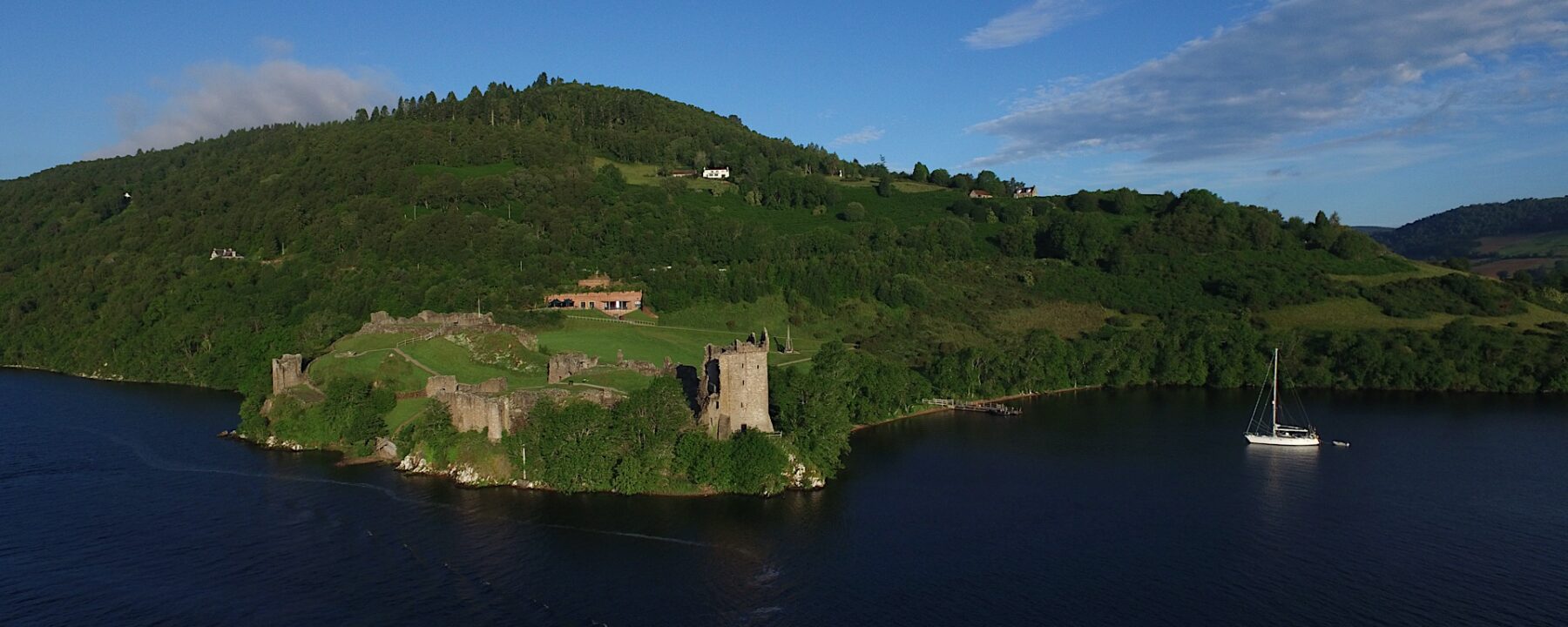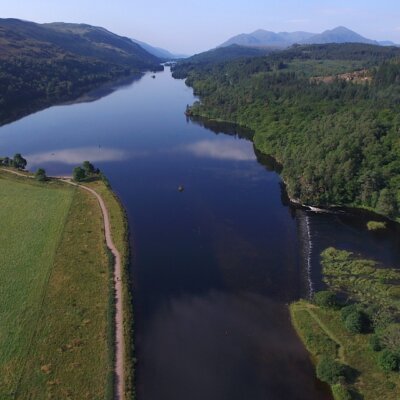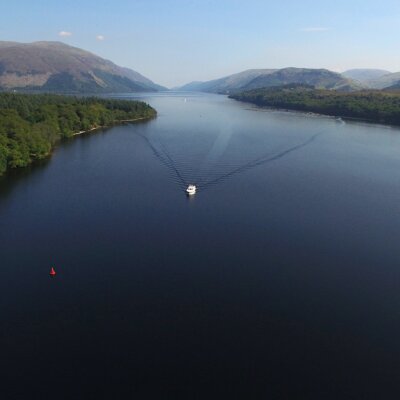Home of the famous Loch Ness monster
After leaving the boat yard in Inverness, you will then travel along the first 5 mile canal section taking you to Dochgarroch Lock. After passing through the lock, there is a small canal section with boats berthing, then the canal opens up into Loch Dochfour, a small body of water connecting the canal with Loch Ness. You can see Aldourie Castle on your left as you cruise past when heading out onto Loch Ness. The loch is 23 miles long and up to a mile wide, cruising time for the whole loch is approximately 3-4 hours, depending on conditions. In the summer months it is possible cruise to Fort Augustus on your first evening, however most people will head for the first night to Urquhart Bay Harbour which is close to the village of Drumnadrochit and about 1-1.5 hours cruise from Dochgarroch Lock. In the morning, subject to suitable weather conditions, Foyers is a nice stop for a couple of hours when you transit along to Fort Augustus. However, sometimes adverse weather conditions or forecast may prevent hire cruisers from mooring at Foyers, at it is very exposed to north-easterly winds, therefore it’s not possible to berth here overnight at all, but it is a lovely day time short stop to visit the Falls of Foyers. Permission from Caley Cruisers (weather) and owners of the Pier is required prior to berthing (berthing fee applicable).
In Fort Augustus, you will ascend the flight of 5 locks, which usually takes about 1.5 hrs to negotiate (it can be several hours including waiting time). After this, you will then enter the next canal section, passing through Kytra Lock, Cullochy Lock, through Aberchalder Bridge and then onto Loch Oich.
Nessie
Rumour has it that Loch Ness is home to Nessie – a plesiosaur who has allegedly been sighted by a number of people over the years. Loch Ness may only be the second largest Scottish loch by surface area but due to its great depth it is the largest by volume and contains more fresh water than all lakes in England and Wales combined. The water visibility in Loch Ness is exceptionally low due to high peat content in the surrounding soil; providing plenty of privacy to any large prehistoric creature who may or may not reside in the loch!
The last land sighting of Nessie occurred in 1933 when George Spicer and his wife who were travelling between Dores and Foyers saw her cross the road in front of their car leaving only a trail of broken undergrowth behind her.
In 1987 a search of Loch Ness took place called Operation Deepscan. Twenty-four Caley Cruisers boats equipped with sonar were deployed across the whole width of the lake; simultaneously sending out acoustic waves. The search lasted for a week and BBC news reported that a number of sonar contacts had been picked up indicating an unidentified object of unusual size and strength. However after further analysis of the SONAR images it was concluded that they pointed to debris at the bottom of the lake, although three of the pictures were of moving debris!
There are many fans and sceptics of Nessie – but just make sure that you keep a look out for her when cruising across Loch Ness; and keep your camera handy just in case…


